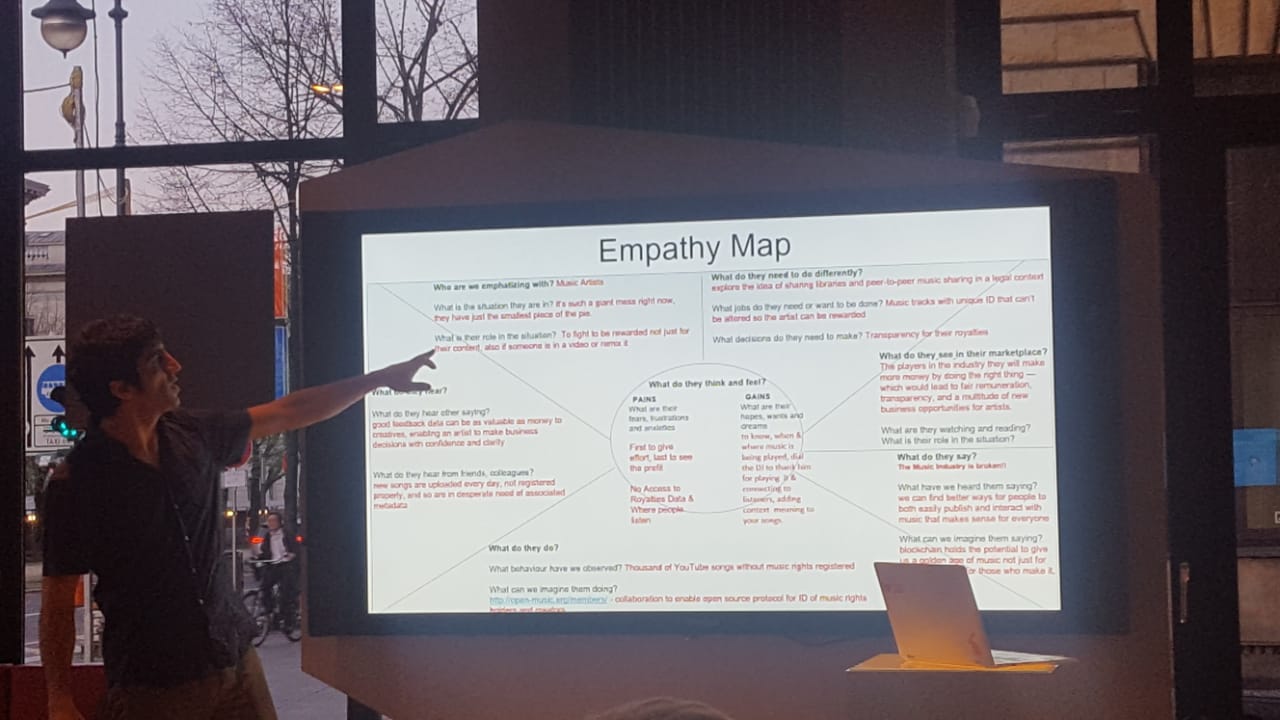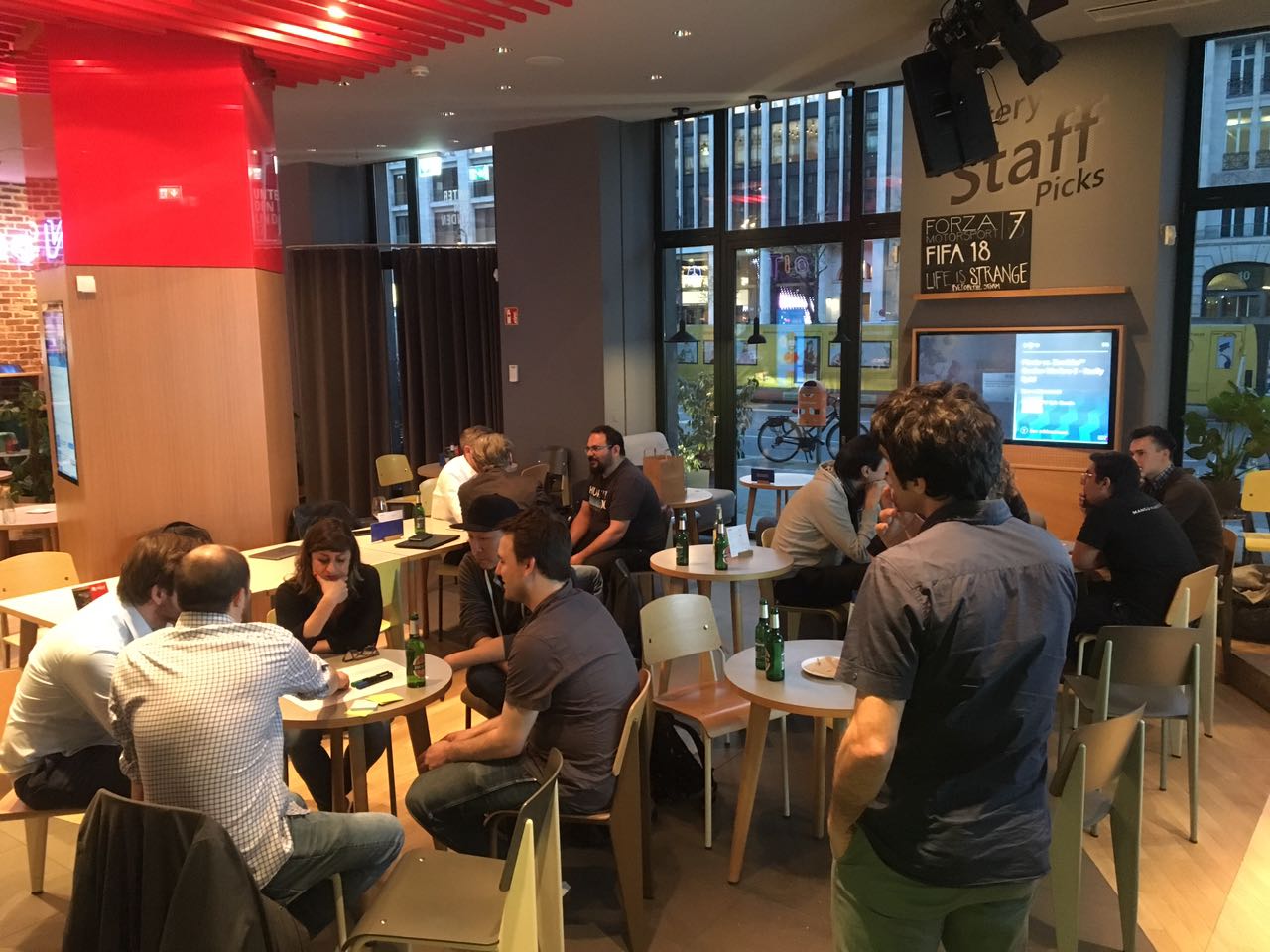Updated on October 5, 2020
Blockchain Design Thinking Workshop: Purpose in Tokenization
Context
The Blockchain Design workshop series took place again on the 17th of April at Microsoft Digital Eatery in Berlin. The purpose in Tokenization was the core of the participatory discussion as the result of the collaboration with the creators of the Tokens Classification Framework . Also the Berlin Blockchain Ledger Z community offered support in making the event happened.
Seize the opportunity to collaborate with specialists was important to provide a solid backdrop and introduce the Blockchain Design approach. Oliver Kraus explained the pillars of the Token Classification Framework and pave the way for myself introducing the adoption of a designer mindset with Blockchain. Specifically I designed the session to land on investigating the Purpose in Tokenization for intangible assets.
My Approach
Empathy Map was the participatory tool I employed to engage teams in a user centered approach. The empathy map enabled teams to generate connections by visualizing feelings, pains and gains of the given intangible assets. For example, tourism or journalism were discussed during the workshop meanwhile I provided the example of music industry as anchor to re-frame the team conversations.
Afterwards the experimental tool I designed to guide the teams to look in prospective was to fill up a Token design map. A tool to establish a road map in the User Journey Mapping, you might find it traditionally in axis. Instead here, it is round shape like a token to unlock questions, opportunities to an iterative process if and why a decentralized business models through tokens is suitable. For example If the project has a network effect – as most of businesses do – tokens could be the economic incentives If the token grows in value there will be a nice return for the early adopters, and help to get going with less capital needed.
Findings
To have specialists on hand is a very good resource that enables others with similar backgrounds. For example, if most people are from digital security fields, it would be good to have someone who is a specialist in blockchain but has a background in digital security. This way analogies can be made that are communicated well. The participants need to embrace the learning experience end-to-end so the final feedback sheet is pivotal to fill up and briefly discussed at the closing step.
What tokens and blockchain do is more than disrupt the market; they change the dynamic and way of operating (creating, sharing & distributing). You no longer need to follow the traditional rules & paths; money is then transparent as well (so it will be with tokens). Blockchain is only another recent transformative + creative act of destruction. There are no grand answers, just a journey where we need to embark with hopefully light, discovery and “ah-Ha” moments.
I believe we need a designer mindset to enable learning and adoption for the blockchain attributes. This is crucial to the perception of trustworthiness, we need time for acceptance and time to remove doubts and concerns through empathy and listening. Finally experimenting and co-creation are the stepping stones as removal of silos to open a new terrain for interdisciplinary work with insights generation.



Recent Comments